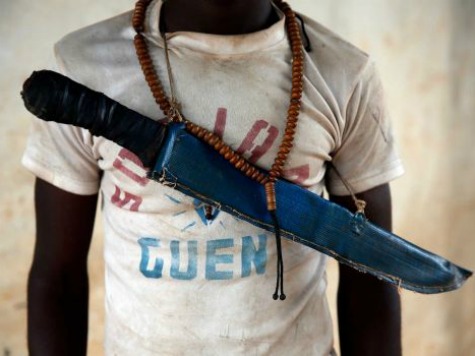In a new tally by the Associated Press, a longstanding but escalating conflict between rival Christian and Muslim militias in the Central African Republic has taken the lives of more than 5,000 people since December of last year. The oft-forgotten conflict, in which militias on both sides target and destroy civilian communities, has ravaged the nation’s infrastructure and government.
The Associated Press reports that 5,186 people have died in the conflict since December 2013, the most complete tally known in the conflict, which threatens to escalate into a full civil war. The AP’s tally, the most comprehensive yet, is based on “a count of bodies and numbers gathered from survivors, priests, imams, and aid workers in more than 50 of the hardest-hit communities,” the agency explains. Not only is this death toll significantly higher than any previously reported, but it is more than double the estimated number in April, and still the Associated Press warns that it is “almost certainly a fraction of the true death toll.”
The news of escalating violence surfaces as the United Nations sends a new peacekeeping mission into the country to help quell the fighting. The United Nations announced that it would send an extra 1,500 troops, volunteered from Bangladesh, Pakistan, Indonesia, and Morocco to join the already-established peacekeeping base in the nation made up of Africans from various nations across the continent. The Associated Press argues that the number of deaths and the exponential rise since April could mean this mission would do little to help many of those already affected.
Many activists are concerned that the UN is doing little to help, noting that it had promised to deliver 7,000 troops in April and is far from reaching that number. “The international community said it wanted to put a stop to the genocide that was in the making. But months later, the war has not stopped,” Joseph Bindoumi, president of the Central African Human Rights League, told the AP.
The violence in Central African Republic has deeply complex origins. As this extensive overview from The Nation and Foreign Policy in Focus explains, much of the violence stems from the aftermath of what is known as the Central African Republic Bush War, in which François Bozizé, the man who overthrew the nation’s first democratically elected leader, was targeted for a coup himself. This war, which lasted about four years and began in 2004, led to Muslim militia factions known as the Seleka finally overthrowing the leader.
Much of what follows is less about the overthrow of the nation’s government and more about disputes between Muslims and Christians. As the report explains, “By June 2013, rampaging Seleka fighters had deliberately killed scores of civilians and destroyed 1,000 homes in Bangui and other provinces.” The Muslim attacks triggered a counter-offensive on the part of Christian militias, and the situation in the nation is such now that rival warring factions deliberately target civilian communities for destruction, rather than the opposing militias themselves.
The onslaught has not only led to the death of thousands, but it has triggered a wave of wartime rape and a major refugee crisis, as thousands attempt to leave the ravaged country.

COMMENTS
Please let us know if you're having issues with commenting.